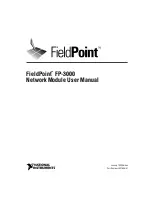
Command Manual – ACL
H3C S7500E Series Ethernet Switches
Chapter 1 ACL Configuration Commands
1-29
z
You will fail to create or modify a rule if its permit/deny statement is exactly the
same as another rule. In addition, if the ACL match order is set to
auto
rather than
config
, you cannot modify ACL rules.
z
When defining ACL rules, you need not assign them IDs. The system can
automatically assign rule IDs starting with 0 and increasing in certain rule
numbering steps. A rule ID thus assigned is greater than the current highest rule
ID. For example, if the rule numbering step is five and the current highest rule ID is
28, the next rule will be numbered 30.
z
You may use the
display acl ipv6
command to verify rules configured in an ACL.
If the match order for this IPv6 ACL is
auto
, rules are displayed in the depth-first
match order rather than by rule number.
Note:
For a basic IPv6 ACL to be referenced by a QoS policy for traffic classification, the
logging
and
fragment
keywords are not supported.
Examples
# Create rules in IPv6 ACL 2000, to permit packets with source address being
2030:5060::9050/64 to pass.
<Sysname> system-view
[Sysname] acl ipv6 number 2000
[Sysname-acl6-basic-2000] rule permit source 2030:5060::9050/64
1.3.8 rule (in advanced IPv6 ACL view)
Syntax
rule
[
rule-id
] {
deny
|
permit
}
protocol
[
destination
{
dest dest-prefix |
dest/dest-prefix | any
} |
destination-port operator port1
[
port2
] |
dscp
dscp |
fragment
|
icmpv6-type
{
icmpv6-type
icmpv6-code
|
icmpv6-message
} |
logging
|
source
{
source source-prefix | source/source-prefix | any
} |
source-port operator
port1
[
port2
] |
time-range
time-name
] *
undo
rule
rule-id
[
destination | destination-port
|
dscp | fragment
|
icmpv6-type |
logging
|
source |
source-port
|
time-range
] *
View
Advanced IPv6 ACL view
Parameters
rule-id
: IPv6 ACL rule number in the range 0 to 65534.
















































